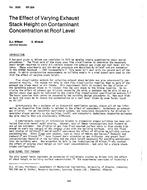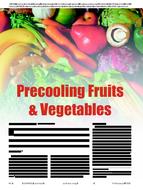In high ambient temperature countries such as Kuwait, the temperature in the summer can well exceed 52°C (125.6°F). As a result, the operation of airconditioning at high temperatures yields a low coefficient of performance (COP), hence affecting the energy efficiency ratio (EER). Developing countries are now facing the challenges of phasing out HCFCs such as R22 in the air-conditioning sector. Also, they are in the process of shifting to HFC refrigerants such as R410A. The aim of this study is to find an alternative refrigerant other than R22 for high ambient temperature countries. Experimental testing was carried out for R22 air-conditioning units, the baseline refrigerant, with a cooling capacity of 12.4kW. The tests were performed at outdoor temperatures of 35°C (95°F) and 46.1 °C (114.98°F). Consequently, the model was developed. The analysis comprises modeling actual and ideal vapor compression air-conditioning cycles with alternative refrigerants. The components of the actual vapor compression cycle consist of a compressor, evaporator, throttling valve and condenser. Losses including pressure and temperature drops are taken into consideration when modeling the cycle. Different types of refrigerants including R410A, R290 and R32 were simulated and their performances were compared to that of R22. Modeling and simulations were executed using Engineering Equation Solver (EES). Variations in the performance of refrigerants are noted and explained. The tested refrigerants have demonstrated deterioration in their performance at 46.1°C (114.98°F) compared to their performance at a typical operating regime. The analysis depicts that R32 has the highest coefficient of performance, thus recommended as a future alternative.
Citation: 6th International Conference on Energy Research and Development, State of Kuwait, March 14–16, 2016
Product Details
- Published:
- 2016
- Number of Pages:
- 8
- Units of Measure:
- Dual
- File Size:
- 1 file , 890 KB
- Product Code(s):
- D-ICER16-38


